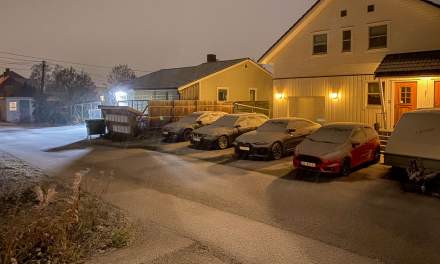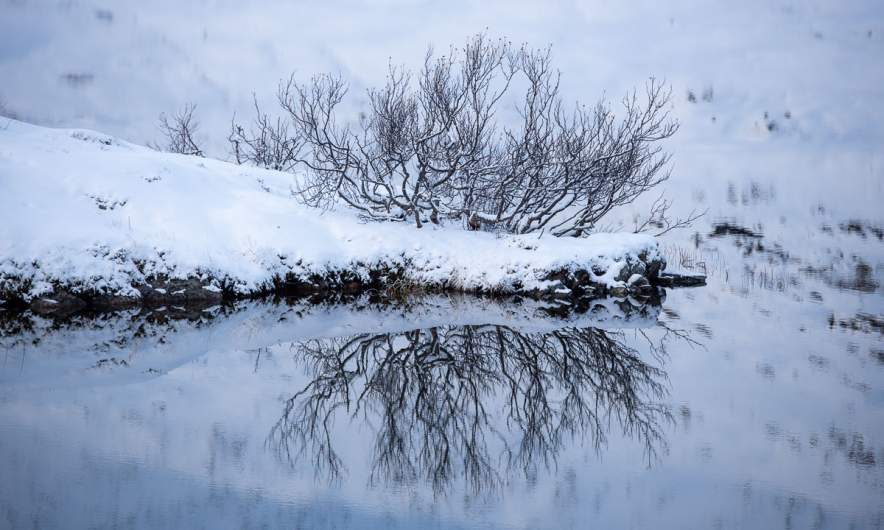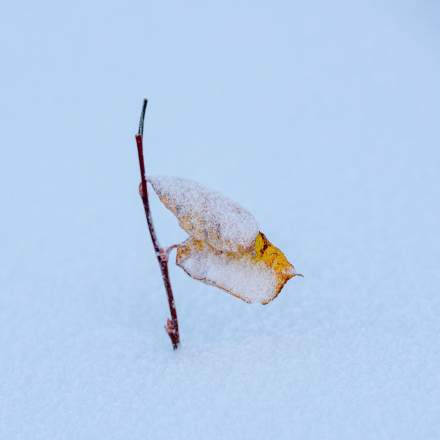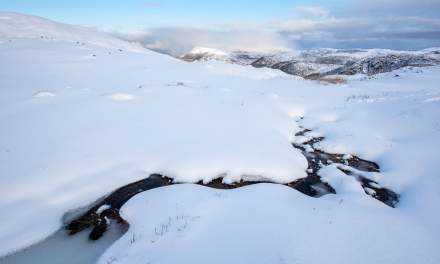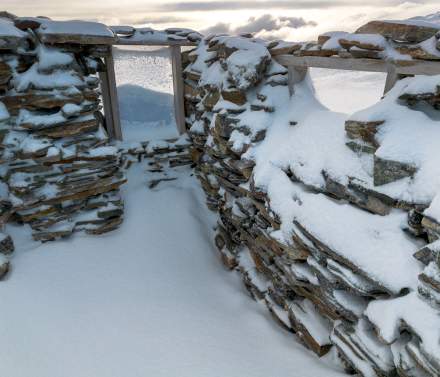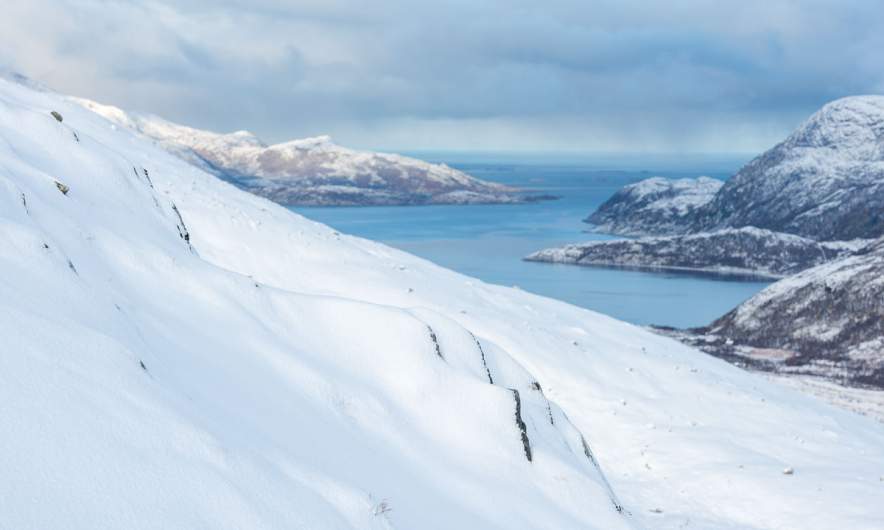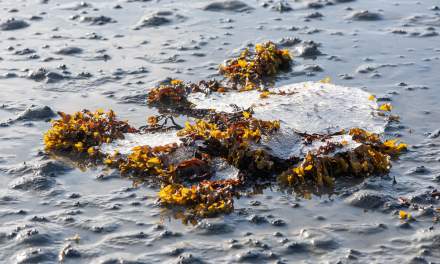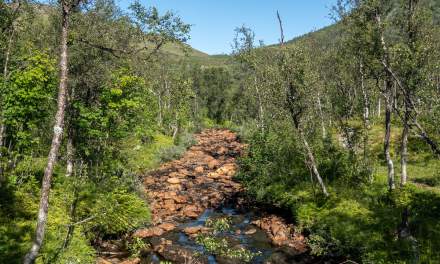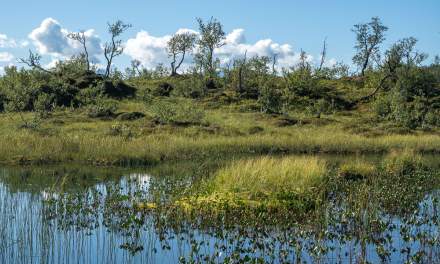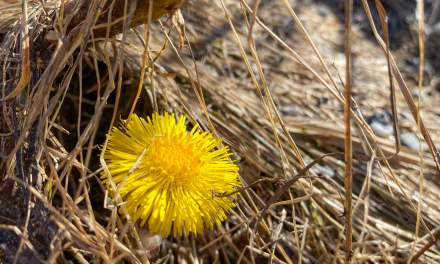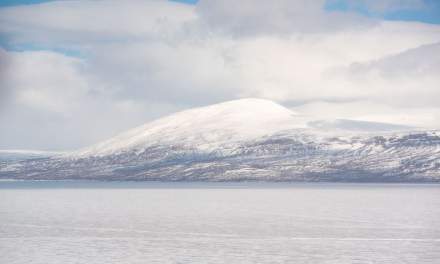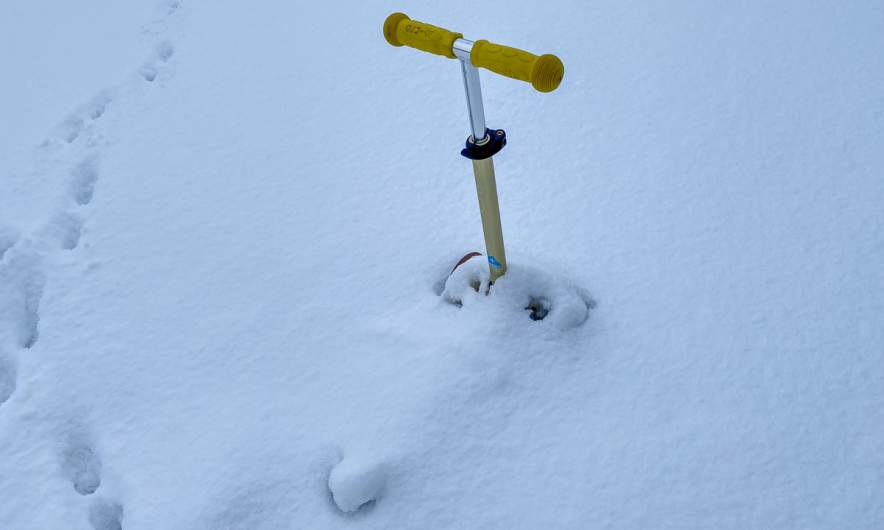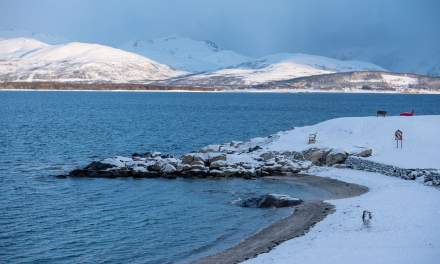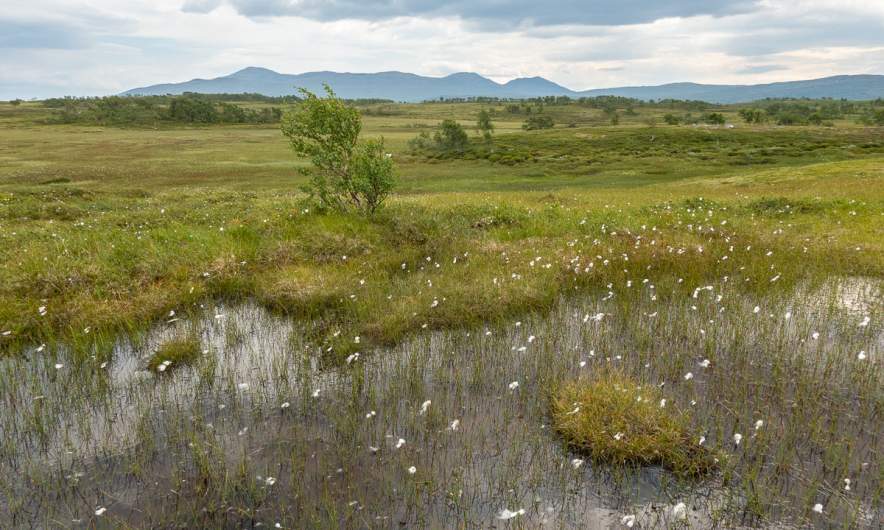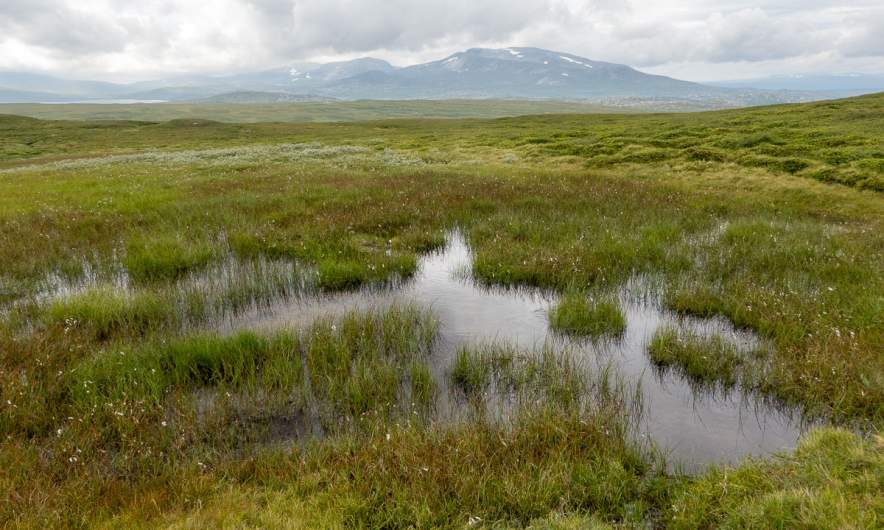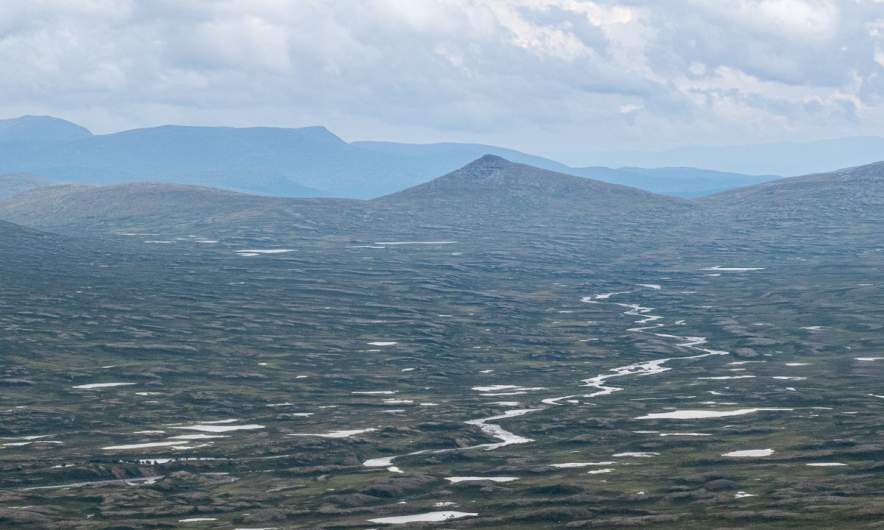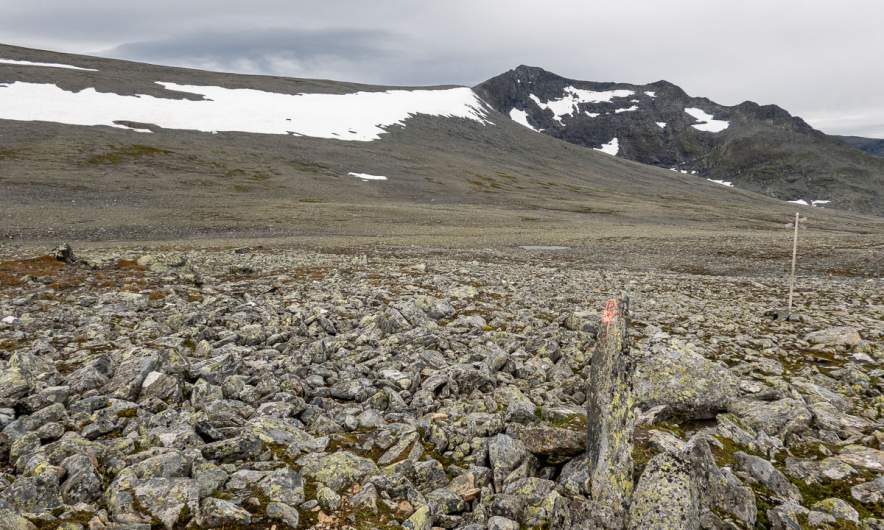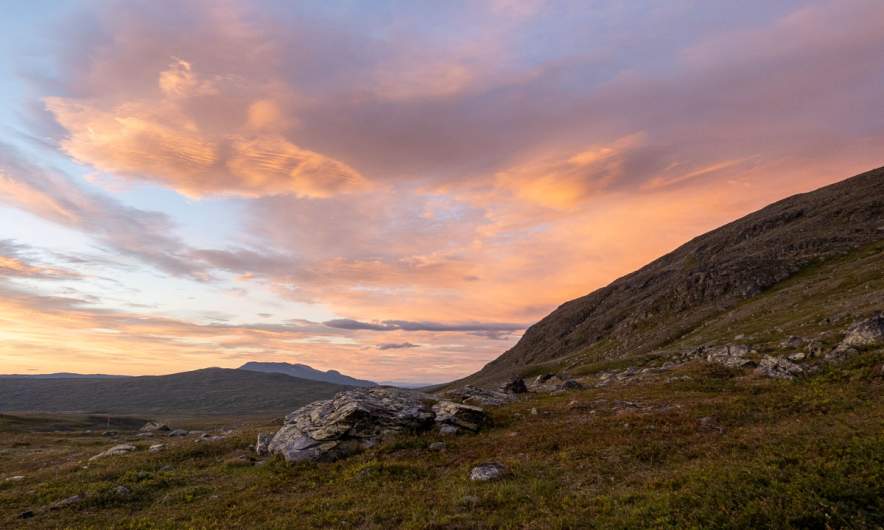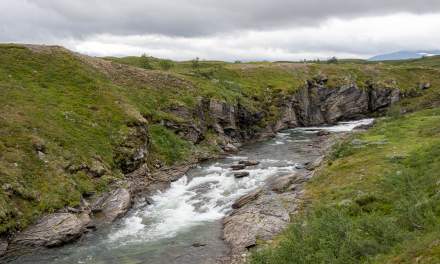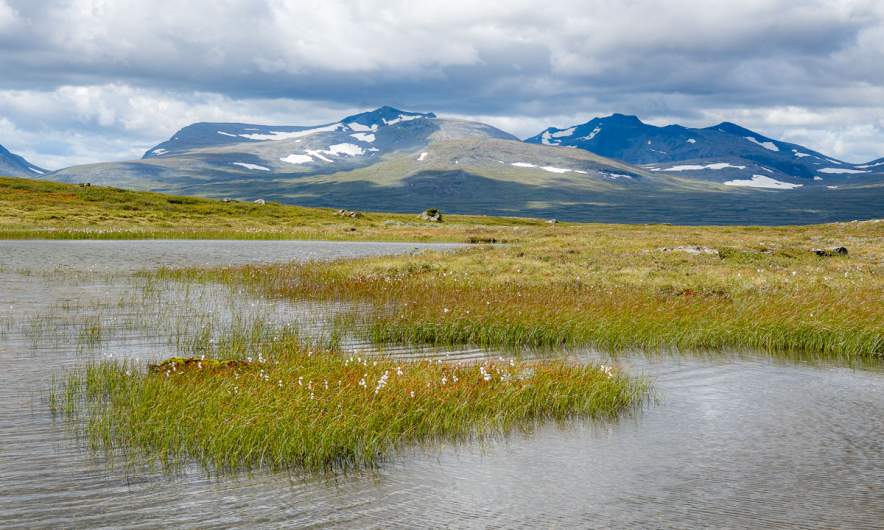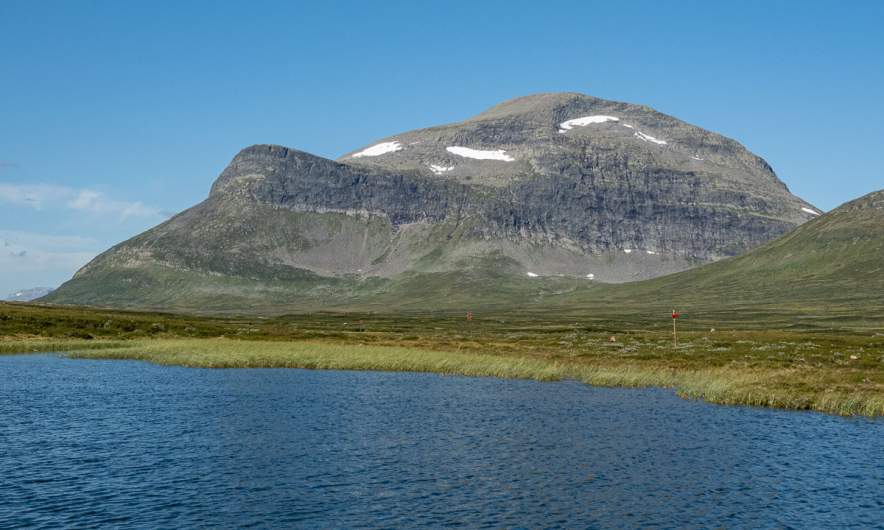It is 10 o’clock on Sunday, 28 April. Marika, whom I know from work and I are in Hansnes on the island Ringvassøya waiting for the ferry. It will take us to the island Vannøya where we want to stay for the day.
I want to take photos, so I am opening the boot of my car and realise that I have forgotten my camera backpack at home. Sh*t! Fortunately I have my Sony camera with me, which does a pretty good job on landscape photography But no time to be grumpy, here comes the ferry.
After a ferry ride of forty minutes we arrive at the island and take the western way to the fishing village Torsvåg. We pass the Polargirl, a passenger ship that uses to make touristic excursions in Svalbard in the summer season.
After seven kilometres we come to our first stop: A small beach. The view is incredible. Snow covered mountains in the back, a cloudless sky above, some islets with white sandy beaches and shallow waters of a turquoise colour so intense that you can see it on satellite images.
We start cleaning the beach, mostly of plastic. A huge amount is plastic nets and ropes from the fishing industry. The plastic is harmful to the environment and is especially dangerous to sea birds. Beach cleaning has become quite popular and it is a good feeling to remove the garbage from nature even when it is only a drop in the ocean. The next photo showing me is taken by Marika.
We stay there for a while, not only because the scenery is to beautiful and the sun shines warmly, but because there are seals out there. Some of them were sitting on rocks until the tide came in, others are swimming in the turquoise water. They are too far away to take good pictures, but I can observe them through my binoculars.
We continue our road trip, occasionally stopping when there is any wildlife. And there is quite a lot. Here at partially frozen puddles we do not only see crows but also a Eurasian curlew.
Minutes later we arrive at Sandsletta, a larger beach. The small sandy dunes are reminiscent of the German North Sea, the mountains aren’t.
There are some more photo stops, either for scenery or for animals. This time a reindeer (we saw some of them) grazing by the road.
Then we arrive at the fishing village Torsvåg. Parts of it are located on Vannøya, others on the small island Kåja. To get there by car you have to cross a dam with a single file concrete road. In the harbour area there is a huge rack full with fish hanging to dry. The dried fish is called stockfish. And there is the Torsvåg lighthouse. If you look north from there, you can see some stony islets and rocks and then there is the open Norwegian sea. Next stop Svalbard.
Is this the end of the island? Well, at least it is the end of this road. But there is more to explore. We turn, drive back 8 km and turn left onto the road to Burøysund in the east. Marika spots an eagle with prey, probably a mountain hare. I do not stop timely and the disturbed eagle flies away to land on a stone nearby. I make a photo through the windscreen, but it is blurred. Anyhow it shows, how big eagles are. You see the crow for size comparison?
Ten minutes later I have stopped the car again, this time for two ptarmigans that first strolled on a meadow by the road and then decided to ignore us and cross the road. Another object with flying abilities was easier to photograph, but what does a propeller plane do on a parking place by the road? Does it use the road for taking off and landing?
We arrive in Burøysund. The whole of Vannøya is a bit “Norway in a nutshell” with its snowy mountains, the blue sea, the rocky shore, the coastal villages. Here anyhow the rocks are special. They are sharp-edged with their “teeth” up into the air and look wild and rough.
Now it is time to head back. On a place we spotted already on our way there we take a late lunch break with the view to the sea (and some ptarmigans and seals in the distance) and the wetlands in our back.
Even if we take the second last ferry we have plenty of time. And we need it, because while driving further I spot something in the water which does not look like seabirds. It is an otter. No, it’s two, wait – three. They meet in the sea and then swim side by side.
Then they go ashore quite near us. One is swimming away soon while the other two stay on land for ten minutes. What an experience so see them so near! I’m sure they have seen us as well but since we are quiet they ignore us. What a pity, that I forgot my Nikon to use the large telephoto lens. The Sony did not manage to take good pictures, also because of the light situation. Anyhow – for the archives – two pictures of the otters:
This day really delivered! Incredible weather and a lot of wildlife. Reindeer, curlews, ptarmigans, geese, eagles, a lot of other birds I do not know, a white mountain hare, the first butterfly of the season (a small tortoiseshell), several seals and now the three otters. Time to catch the ferry with a hasty detour to the south east of the island from which you can see the Nordfugløya (Northern bird island).
Finally we have to hurry a bit but we reach the 19:15-ferry in time. Another forty minutes ferry ride in beautiful light …
… and we are back in Hansnes on the island Ringvassøya which is connected to the island Kvaløya with a tunnel which is connected to the island Tromsøya with a bridge, and that’s where I live. There are worse places!
Takk for turen, Marika!






















































































































